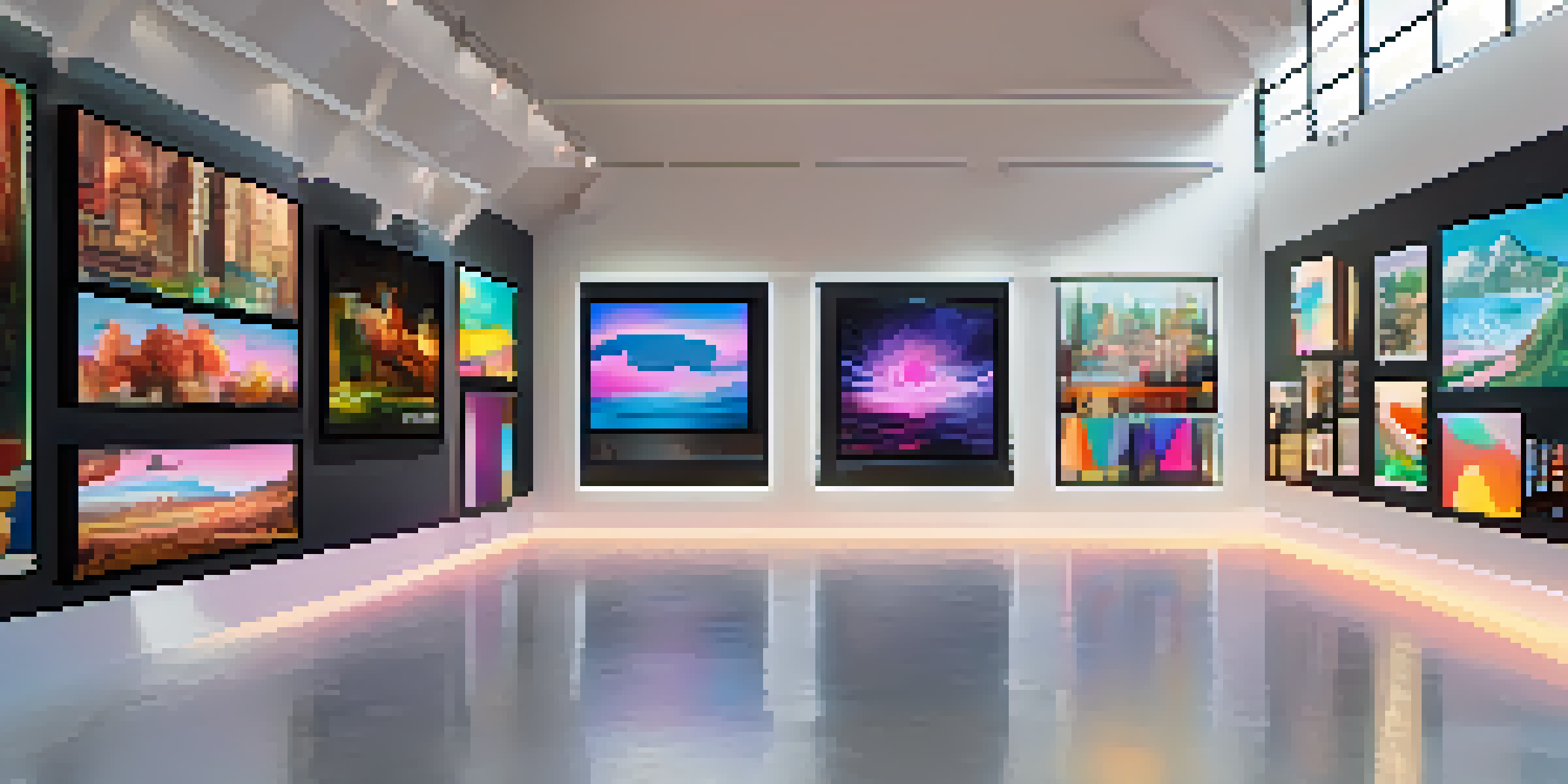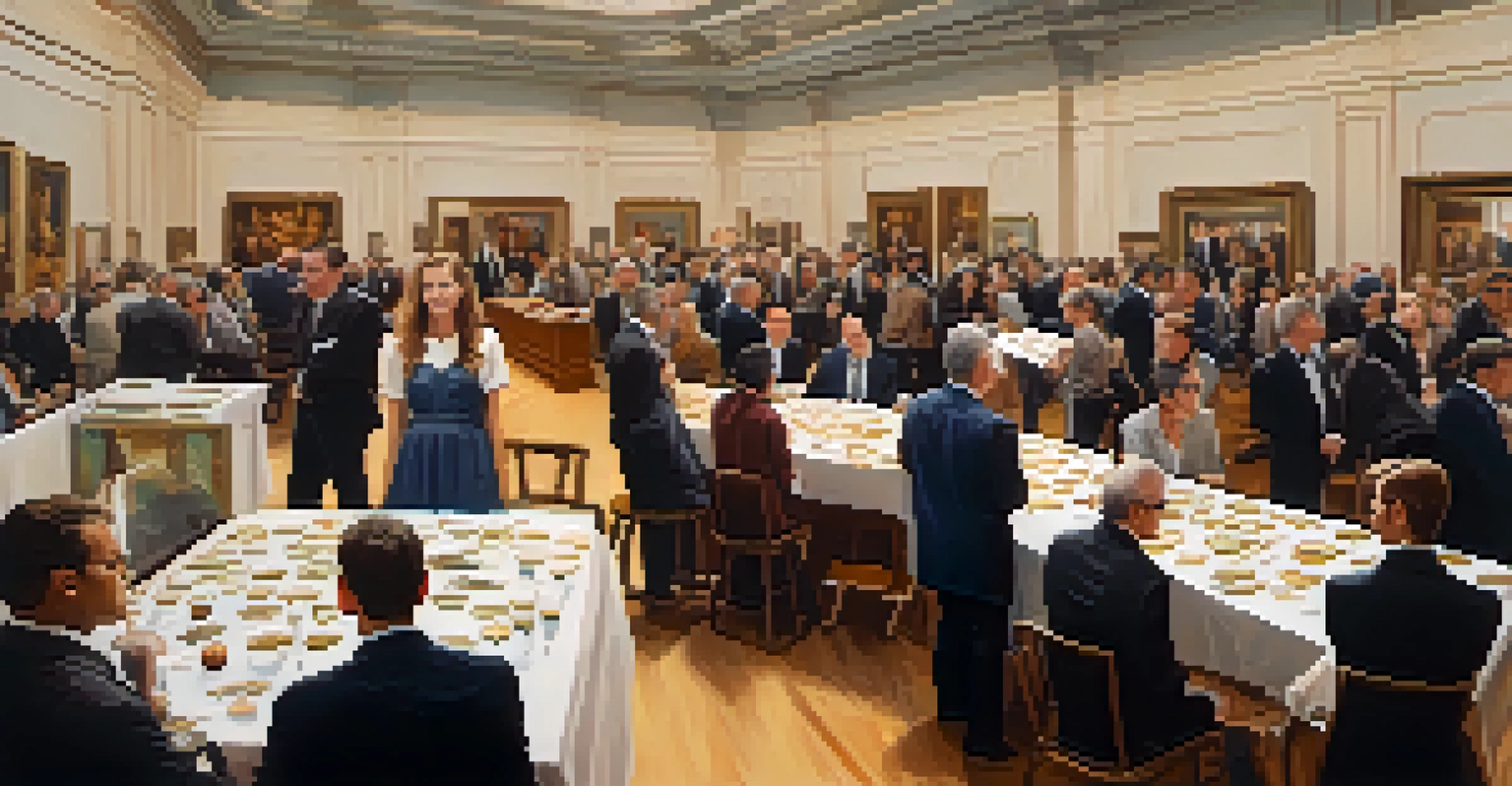The Art Market: Trends to Watch for Investors in 2023

Rise of Digital Art and NFTs in 2023
As we move further into 2023, digital art and NFTs are reshaping the art market landscape. These unique digital assets are gaining traction, attracting both seasoned collectors and new investors alike. The allure of owning a piece of art that exists solely in the digital realm is not just a fad; it’s a revolution that brings with it a new set of opportunities.
Art is not freedom from discipline, but disciplined freedom.
With platforms like OpenSea and Rarible making it easier to buy and sell NFTs, the accessibility of digital art has skyrocketed. Artists are now able to reach global audiences without the traditional barriers of galleries and exhibitions. This democratization of art ownership means that investors can diversify their portfolios in ways that were previously unimaginable.
Related Resource
However, as with any emerging market, caution is advised. While the buzz around NFTs is exciting, it’s essential to do thorough research before diving in. Understanding the technology and the artist's reputation can make all the difference between a smart investment and a costly mistake.
Sustainability Trends in Art Investment
Sustainability is no longer just a buzzword; it's becoming a pivotal factor in art investment decisions. Many investors are now looking for artworks that reflect eco-conscious practices, whether through the materials used or the message conveyed. This trend is not only a response to climate change but also resonates with a younger, more socially aware audience.

Artists who prioritize sustainability are gaining recognition, and their works often command higher prices. Collectors are increasingly willing to pay a premium for art that aligns with their values. This shift indicates a broader cultural change where art is seen as a vehicle for advocacy and change, making it a worthwhile avenue for investment.
Digital Art and NFTs Revolutionize Market
The growth of digital art and NFTs is transforming the art market, making it more accessible to a wider audience of collectors and investors.
For investors, aligning with sustainable practices can also open doors to new markets and networks. By supporting eco-friendly artists, investors not only contribute to a better world but also position themselves as forward-thinking in a competitive market.
The Growing Importance of Provenance
In the art world, provenance refers to the history of ownership of a piece of art. As the market becomes more competitive, the importance of establishing a clear and trustworthy provenance cannot be overstated. Buyers are increasingly scrutinizing the backgrounds of artworks, making robust documentation essential.
The role of the artist is to ask questions, not to answer them.
Having a well-documented provenance can significantly increase a piece’s value. Collectors are more likely to invest in art with a transparent history, as it minimizes the risk of forgery or legal disputes. This trend highlights the need for both artists and collectors to maintain clear records and documentation.
Related Resource
Investors should consider provenance as a key factor when evaluating potential purchases. A solid provenance can enhance not only the artwork's worth but also its appeal in future sales, making it a crucial element in any investment strategy.
Emerging Artists: The Next Big Investment Opportunity
Investing in emerging artists has become an exciting trend in 2023. With the rise of social media platforms, new talent is being discovered more rapidly than ever. This accessibility allows investors to tap into the potential of artists who may soon become household names.
Many collectors are shifting their focus from established names to emerging talents, seeing this as a way to acquire unique works at lower prices. This approach not only diversifies their collections but also offers the potential for significant returns as these artists gain recognition.
Sustainability Drives Art Investment
Investors are increasingly prioritizing eco-conscious practices in art, reflecting a cultural shift towards sustainability and social values.
However, investing in emerging artists requires a keen eye and a willingness to take risks. Understanding the artist's vision and market potential is crucial, as is staying informed about art fairs and exhibitions that showcase new talents. This trend can be rewarding for those who are proactive and discerning.
The Influence of Auctions on Art Valuation
Auction houses play a pivotal role in determining art valuation. In 2023, the auction landscape continues to evolve, with online bidding becoming more prevalent. This shift has opened up the art market to a broader audience, allowing more collectors to participate in bidding wars for coveted pieces.
Auction results often set the benchmark for market prices, impacting how artworks are valued in galleries and private sales. High-profile auctions can create trends, influencing what types of art are in demand. As a result, investors should keep a close eye on auction house results to gauge market sentiment.
Related Resource
Participating in auctions can be an effective strategy for investors looking to acquire valuable pieces. However, it’s essential to familiarize oneself with the auction process, including fees and bidding strategies, to make informed decisions.
Globalization and Its Impact on the Art Market
Globalization is reshaping the art market, creating new opportunities for investors. As the world becomes more interconnected, artists from diverse backgrounds are gaining visibility. This trend not only diversifies the art available but also introduces investors to various cultural perspectives and narratives.
With art fairs and exhibitions being held worldwide, investors can now access a more extensive range of artworks. This increased exposure allows for more informed investment decisions, as collectors can compare works from different regions and styles. The global art market is richer and more dynamic than ever before.
Provenance Enhances Art Value
A clear and documented provenance is becoming essential for art investment, significantly impacting an artwork's value and appeal.
However, investing in art from different cultures requires cultural sensitivity and awareness. Understanding the significance behind certain artworks can enhance appreciation and investment value. Investors should take the time to learn about the artists and their backgrounds to make more meaningful connections.
Technology's Role in Art Authentication
As the art market grows, so does the need for reliable authentication methods. Advances in technology are playing a crucial role in verifying the authenticity of artworks. Techniques such as blockchain, digital fingerprinting, and AI are emerging as powerful tools for investors.
Using technology for authentication not only protects buyers from forgeries but also adds value to authenticated pieces. Artworks with verified authenticity are more likely to appreciate over time, making them attractive options for investors. This trend is likely to continue as technology becomes further integrated into the art world.

Investors should stay informed about these technological advancements, as they can significantly impact investment decisions. Understanding how these tools work can provide investors with an edge in navigating the complexities of the art market.